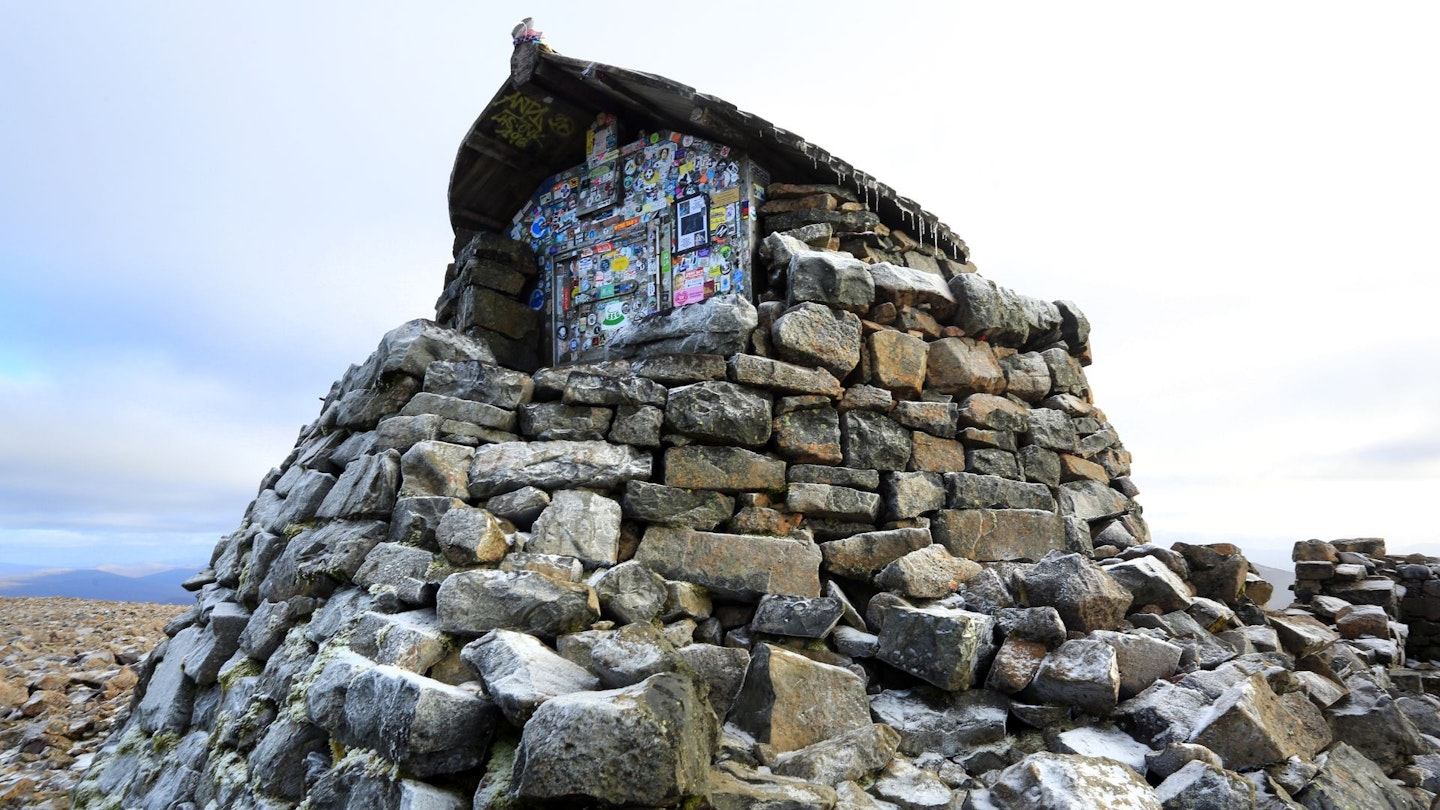Wherever you go in the world, people have heard of Ben Nevis. Britain’s highest mountain is a bucket list prize for hikers of all ages and abilities, but how hard is it to climb?
The answer to that question, as with most mountains, is complicated. Choose the right route and catch Ben Nevis in the right weather, and it can feel like little more than a long, spectacular and fairly exhausting walk. But catch the mountain on the wrong day from the wrong angle, and things can get serious quickly.
Never let anyone tell you that Ben Nevis is ‘easy’ or ‘boring’. If you walk the most popular route from Glen Nevis, you only get half the story because, from here, the mountain feels lumpy, benign, and almost welcoming. Approach from the north, however, and things get a lot more serious when the jagged cliffs of the mountain’s iconic north face loom into view.
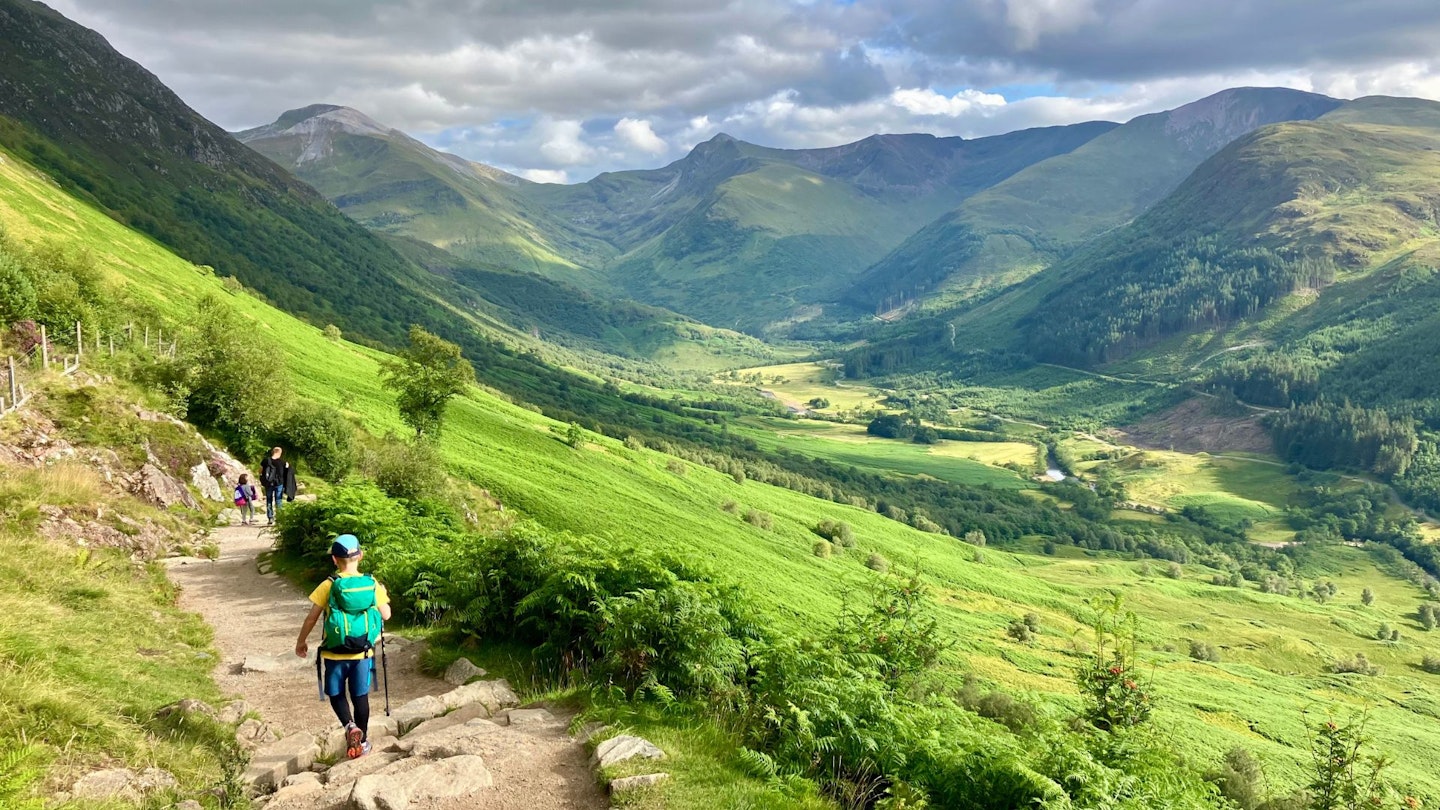
If you want to climb Ben Nevis and need a few tips to help plan your ascent, read the guide below, which our team of experts has compiled. Between them, they’ve walked every route up Ben Nevis and climbed the mountain from every angle.
In this article, you’ll find advice on everything from picking the best route and parking responsibly to where to stock up on food and which pub to visit for a post-walk pint.
But first, in the words of former Trail magazine and Nat Geo online editor Simon Ingram, here’s why Ben Nevis is the perfect target for your next hiking adventure.
Ben Nevis – an Alpine freak dropped onto Scotland
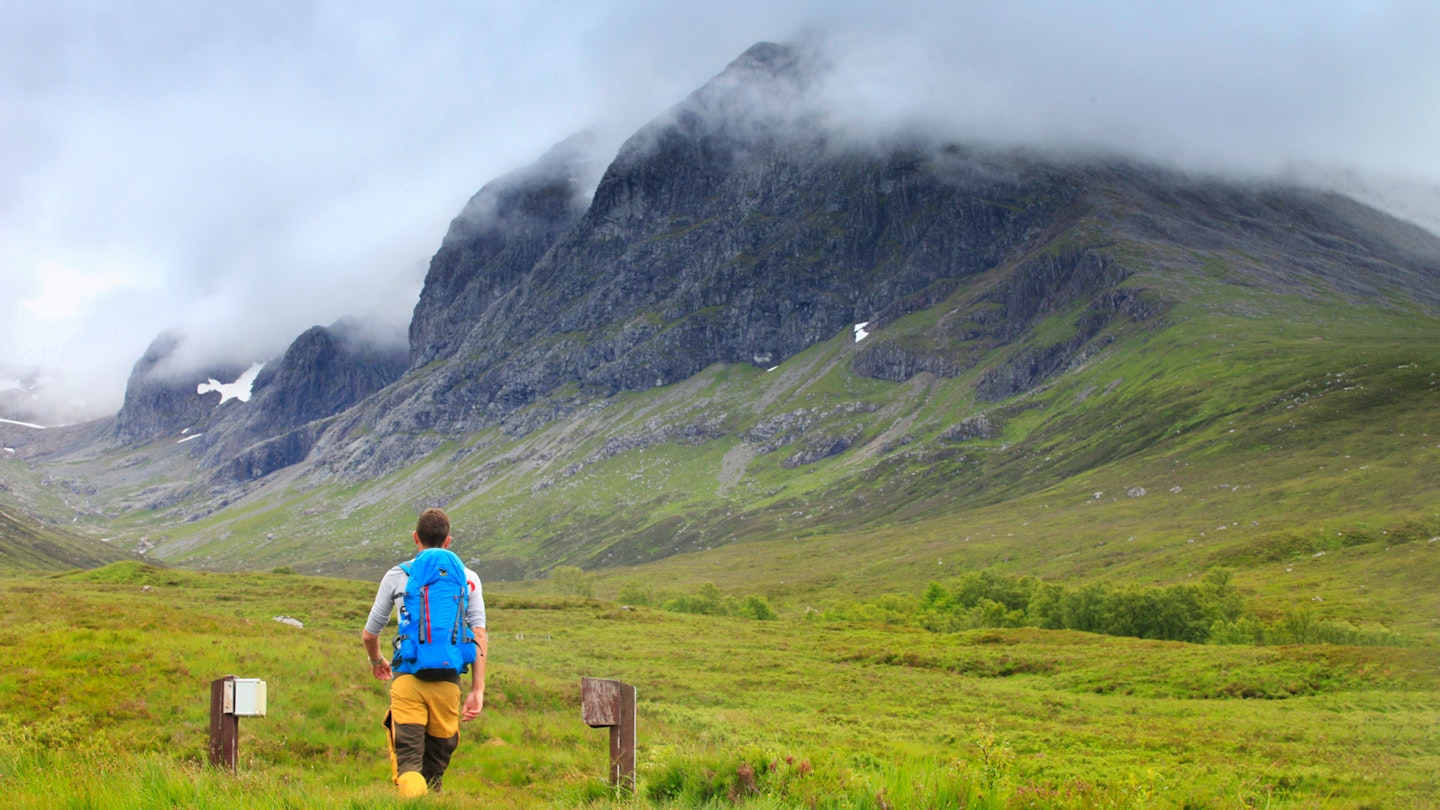
Ben Nevis has a curious condition. Every person in the street knows it by name. And if that name is delivered with a nonplussed expression, you may have found someone who knows Ben Nevis not only by name but by its popular reputation. A motorway, a fiesta of have-a-go heroes, its summit a kind of peculiar ceremonial scrapheap for feats craving a 'highest' clause to validate them in the record books.
Maybe these folks are walking's answer to a splinter party taking a stance against populism, or (more likely) they've had a bad day on the Mountain Track they'd rather forget. Either way, forgive them. It's expected.
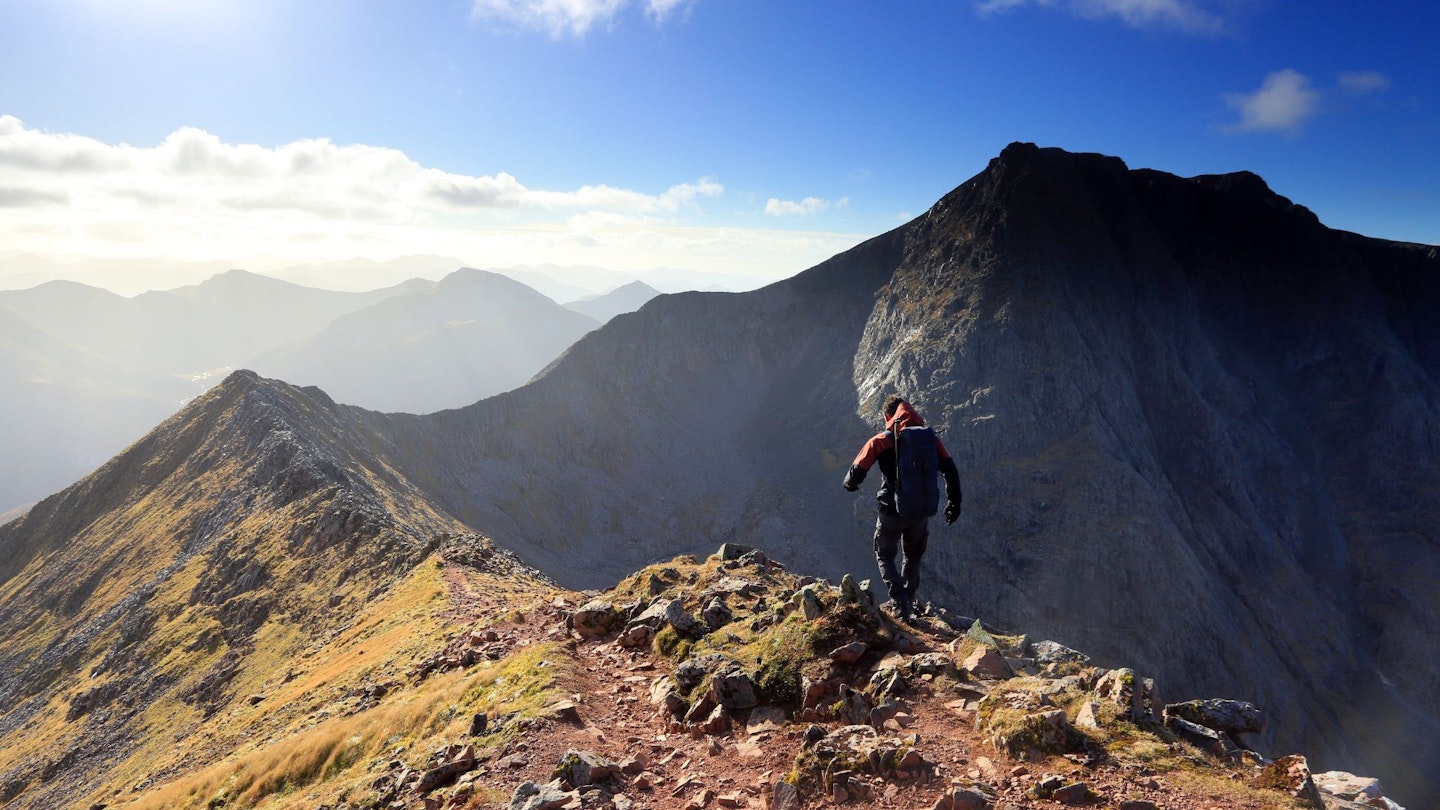
Like many things of wide appeal, a peak as famous as Ben Nevis is trendy to dislike. But like we said, it's a curious condition. Curious because to anyone who has merely a passing grasp of what really makes a mountain, Ben Nevis is absolutely bloody stupendous.
Dramatic, labyrinthine, transcendent and soaring, devious and thoroughly terrifying, and – as with the best of anything – utterly of its own ilk – an Alpine freak ripped from somewhere else entirely and dropped, wriggling, onto Scotland.
Consider the way it looks, feels and behaves, and the stunts, fanfare and unjustifiably eroded reputation fade to mist. Ben Nevis is then stripped raw to what it inarguably is: Britain's greatest mountain, bar none. The fact that it's also the highest is merely a happy topographical accident.
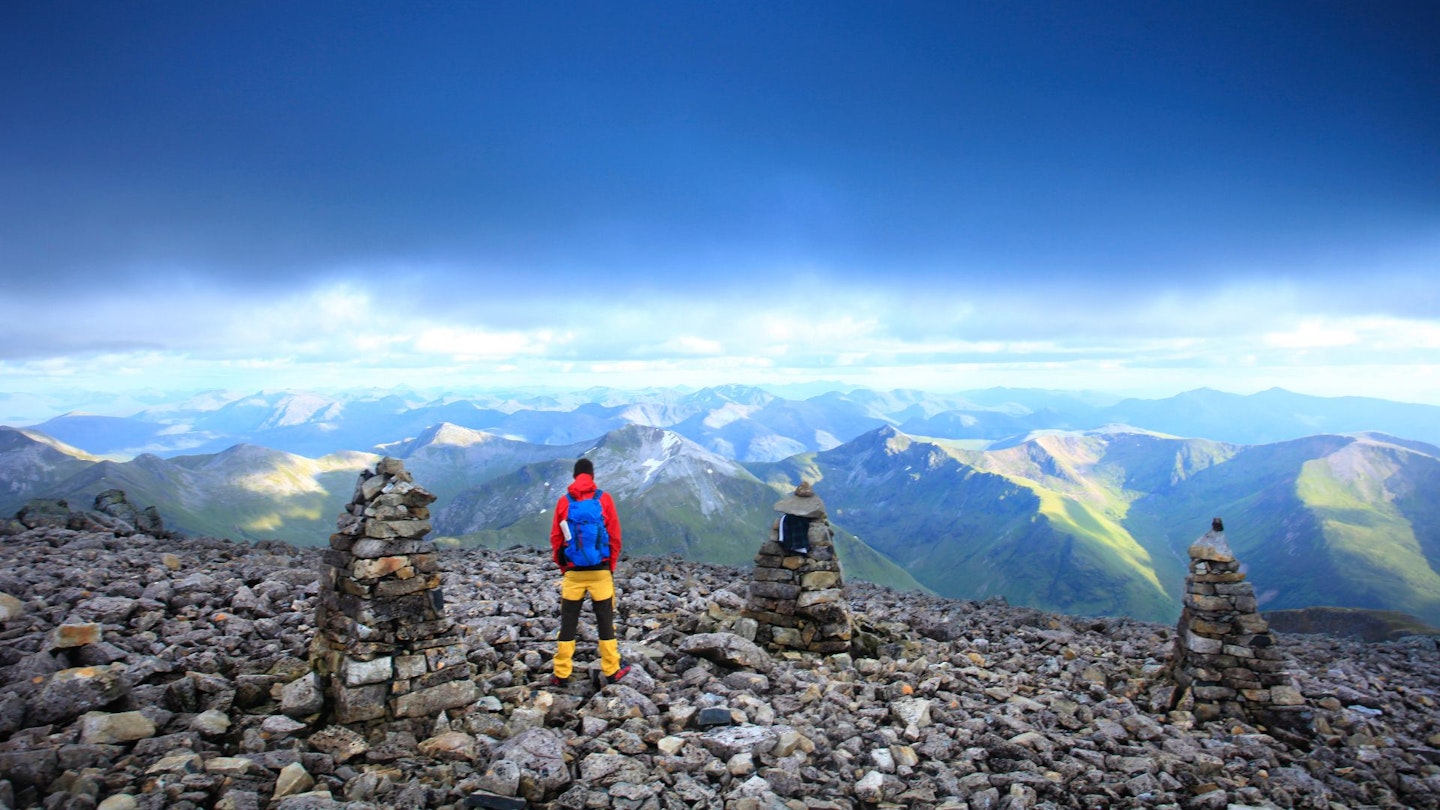
Accident or not, consequently a lot of people climb this peak. The word 'busy' could be bent into truth for what everyone knows as the Mountain Track, a tightrope of terrain ascending the path of least resistance up Ben Nevis's rump.
But this mountain is enormous: to flavour the whole with the taste of one sliver just doesn't make sense. Never has it been truer that getting to the top is merely a technicality: Ben Nevis is a mountain you have to absorb.
The more you get to know Ben Nevis, the respect doesn't diminish, it grows. There isn't a British mountaineer alive who doesn't consider it shrine-like. Those who have scaled the world's highest peaks and sloughed frost-chewed up its hardest rock walls still reserve respect for The Ben. And not sentimental respect either, such as you might apply to Trafalgar Square or The Rolling Stones. Ben Nevis was, is, and will always be, a thing of awe.
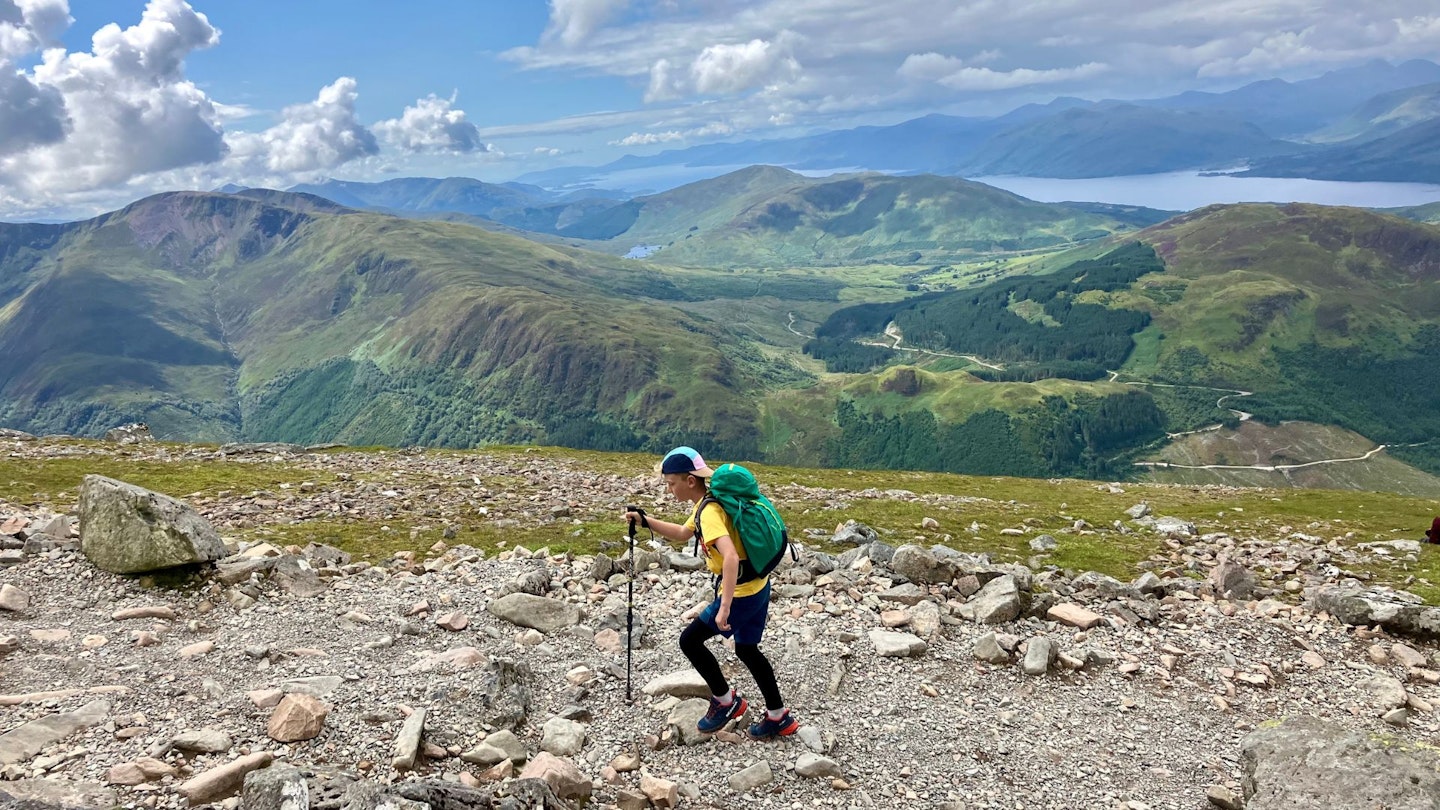
For starters, look how the damn thing is built. It's a monstrous contradiction, a geological Incredible Hulk. From some angles it's a lump: a crescent of long, soft flanks descending from a pitch-flat summit into valleys of stomach-crumpling depth.
To the south, where the longest slope in Britain makes landfall, following the Water of Nevis even a few miles upstream will put you among some of the wildest, darkest terrain in Scotland.
From these southern aspects, Ben Nevis is a thing of huge bulk: impressive and disquieting, yet buffoonish. But don't trust this impression. From here, and from the angle most walkers sneak up it, you're contemplating a mountain with its back turned.
It's probably the valley east of the village of Spean Bridge that offers the most faithful view of the mountain's defining character. Even then, the meat of Ben Nevis's north face is walled by neighbour Carn Mor Dearg, though hints can be had above its 4,000ft ramparts of what lies beyond. Dark flutes of rock, a sheer edge hard against the skyline.
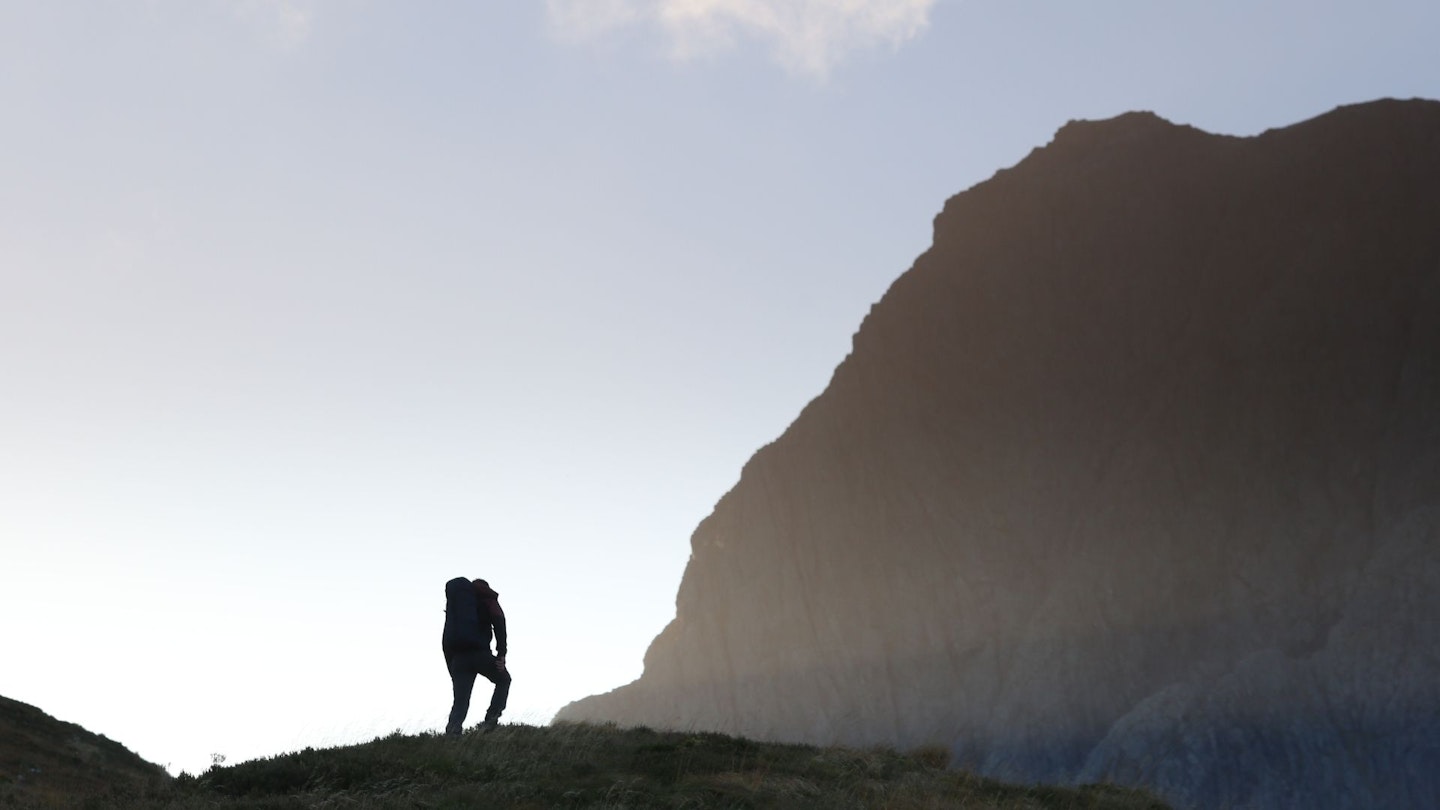
To get into its shadow and really feel your neck hairs rise, you have to enter the bowels of Coire Leis. Here, you're under the pounce of the north face good and proper, and the ribs and trenches of the biggest, hardest climbing routes in these isles leer above you.
Tower Ridge, Point Five Gully, Orion Face – a frozen rogues' gallery that has stood still while mountaineering's most glorious and horrible histories have spidered across it. Approached by the sublime Carn Mor Dearg (CMD) Arête, The Ben's contradiction is revealed. No longer a lump, but an angry sharkfin of rock punching skyward.
And once up, what a surreal place to be. Dubbed 'the Plateau of Storms' by the hardy Victorians who lived in the pummelled, now ruinous observatory atop it – or simply 'Hell' by the English Romantic poet John Keats – the summit of Ben Nevis treads a delicious, dastardly line between the demure and the deceitfully dangerous.
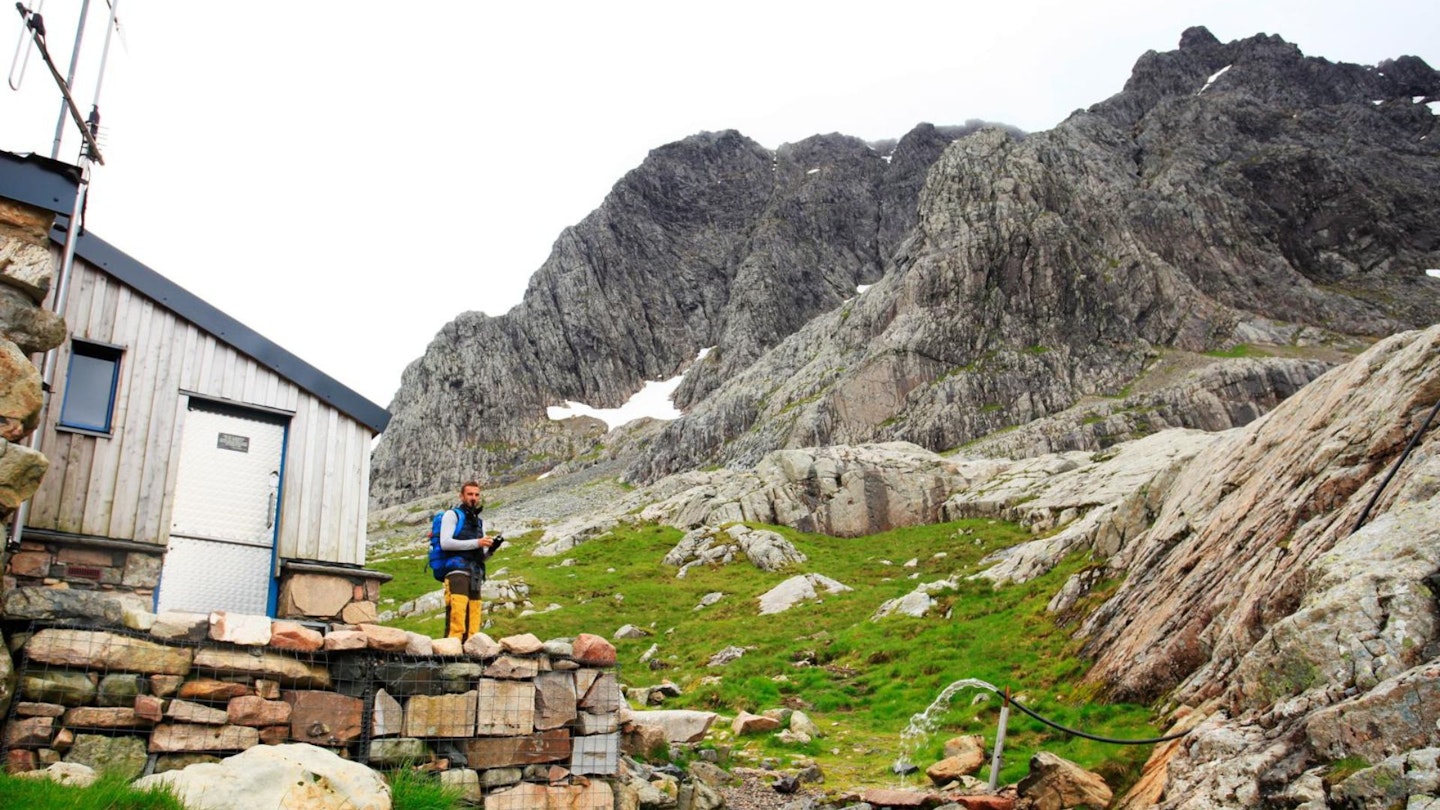
A place constantly mithered with weird weather, cut-throat navigation and a temperature with a sub-zero year-round average. While largely flat, it collapses with no warning into the biggest drops in the land.
In winter, the cornices that overhang these drops can be completely imperceptible – so stray too close to the edge for a breather, and you might be eating your Peperami stood on nothing but inches of snow meringue and half a vertical mile of dead air.
It's around the summit that all the routes converge and your company becomes eclectic. Climbers, walkers, charity challengers, backpackers and those for whom summiting The Ben is the pinnacle of their physical achievements – and a worthy and often hard-won one it is.
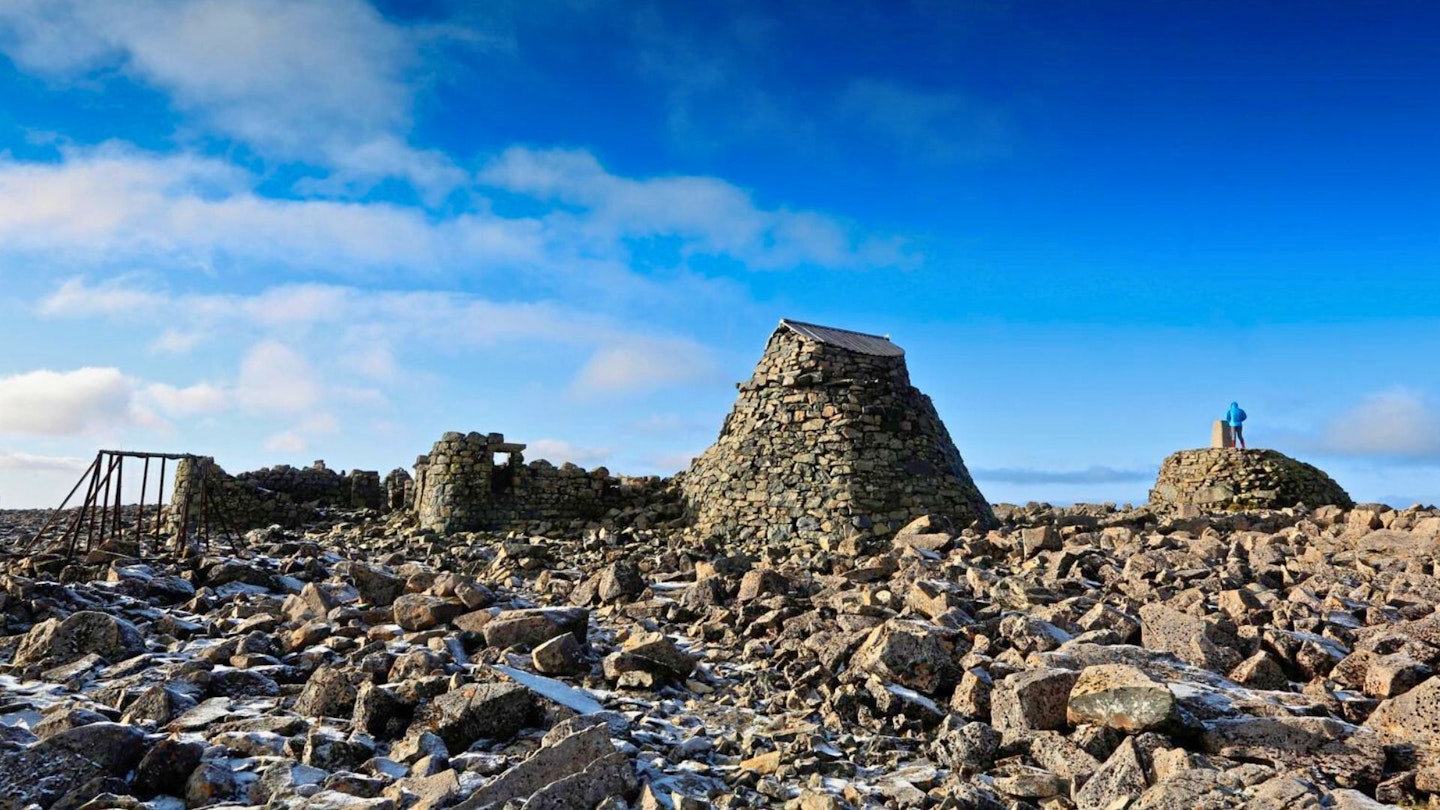
Around you rusts the ruins of centuries of endeavour: a strange frame-like implement, a crumbling turret, and an aluminium shelter – all giving the summit the air of a kind of post-apocalyptic playground. But filling your senses is the cavernous sky above you, the feeling of collective elation at being on the roof of our most historic piece of mountain architecture.
Pick a quiet moment on a fine day, then ascend alone the steps to the trig point. Look east, and in a straight line there's nobody higher than you until Russia. West, Quebec. And even then, in a personality contest, you'd still be on the winning peak.
Enjoy that feeling. Smile. Savour this calm moment. Then get down before Ben Nevis gets angry. Because, like all monstrous contradictions, you really wouldn't like it when it's angry.
Ben Nevis – common questions answered
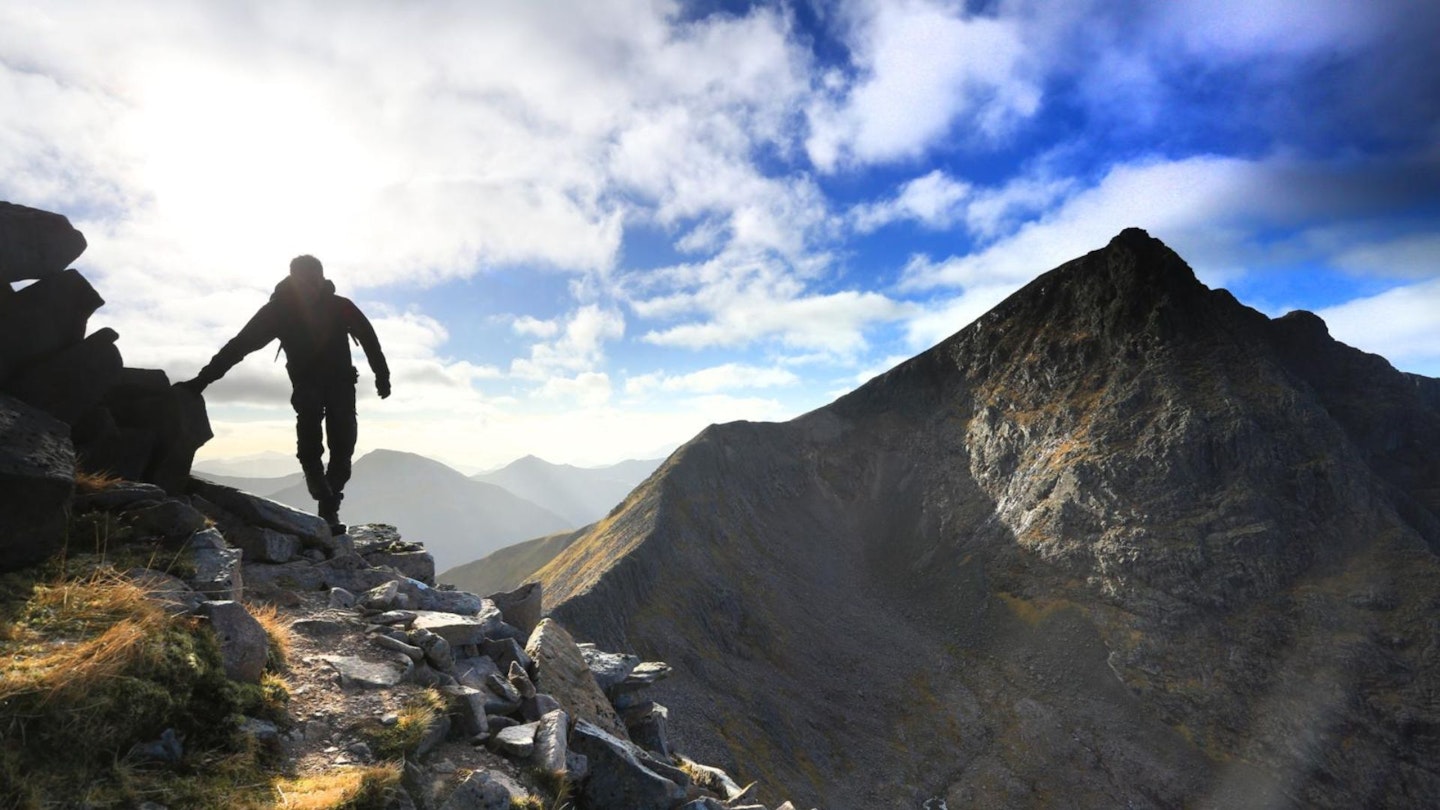
How high is Ben Nevis?
Ben Nevis is the highest mountain in Scotland by a clear distance. The trig point stands at 1,345m, which puts it a comfortable 36m higher than second-place Braeriach in the Cairngorms National Park.
The Ben is also so significantly higher than any of the peaks surrounding it that the views from the top are long in every direction, looking down on the surrounding Mamores, over to Glen Coe, north as far as Fisherfield Forest, and west out to the Scottish Islands.
The downside to that height, though, is that any ascent route is long and exhausting. Most of the recognised paths and trails start from near sea level, so you’ll feel every single one of those 1,345m (both up and down the mountain) in your legs at the end of the day.
Where is Ben Nevis located?
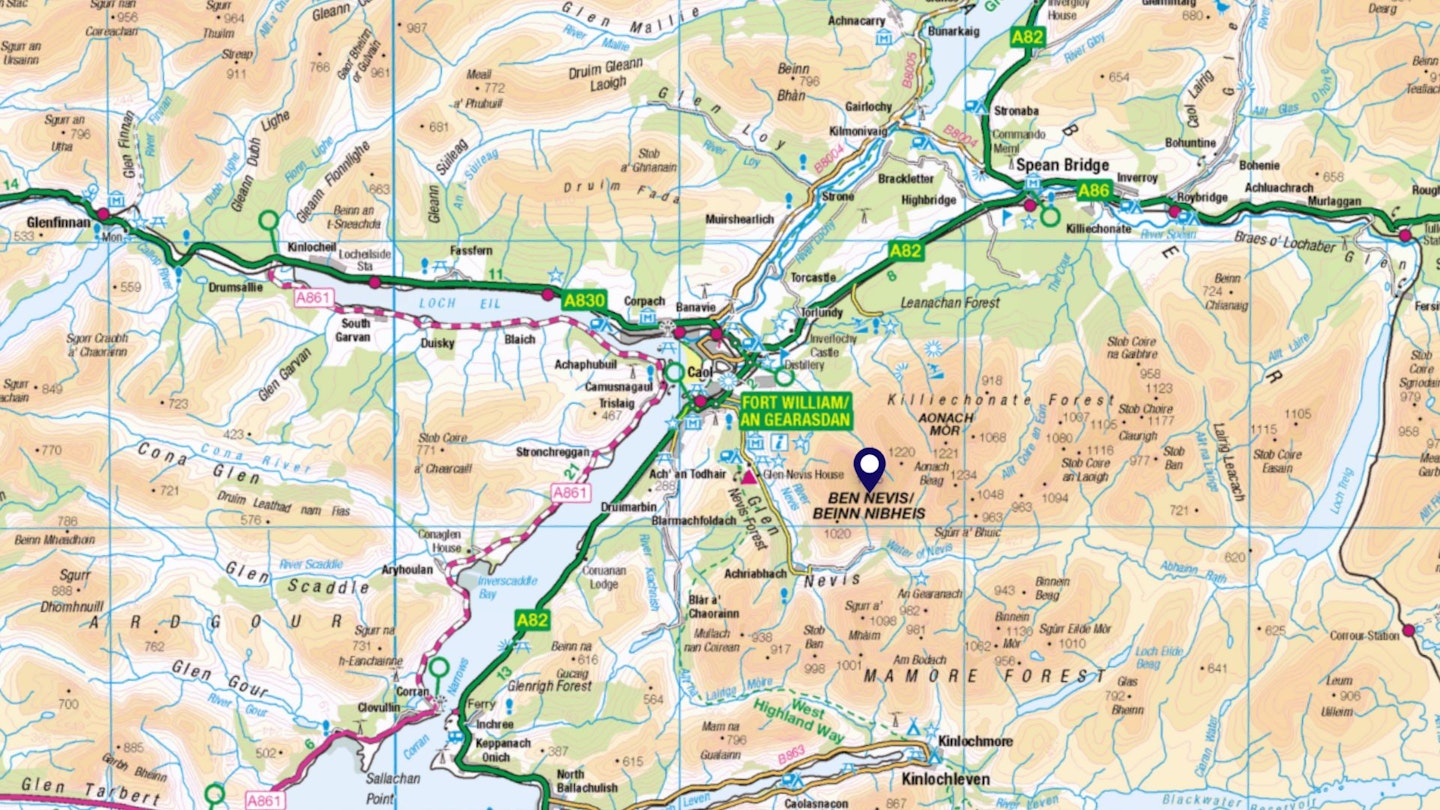
Ben Nevis towers over the town of Fort William in the western Highlands, a few miles from, the northern tip of Loch Linnhe. It’s around 110 miles and three hours from Glasgow by car, with most of the journey on the A82, which passes along Loch Lomond and through Glen Coe before reaching Fort William.
The mountain can also be reached fairly easily from Inverness in the north, again on the A82 which travels alongside Loch Ness then through Spean Bridge to Fort William.
Fort William train station is served by good train links via Scotrail from Glasgow City Centre, where you can also catch a regular bus service to the Ben Nevis area.
Is Ben Nevis a dangerous mountain?
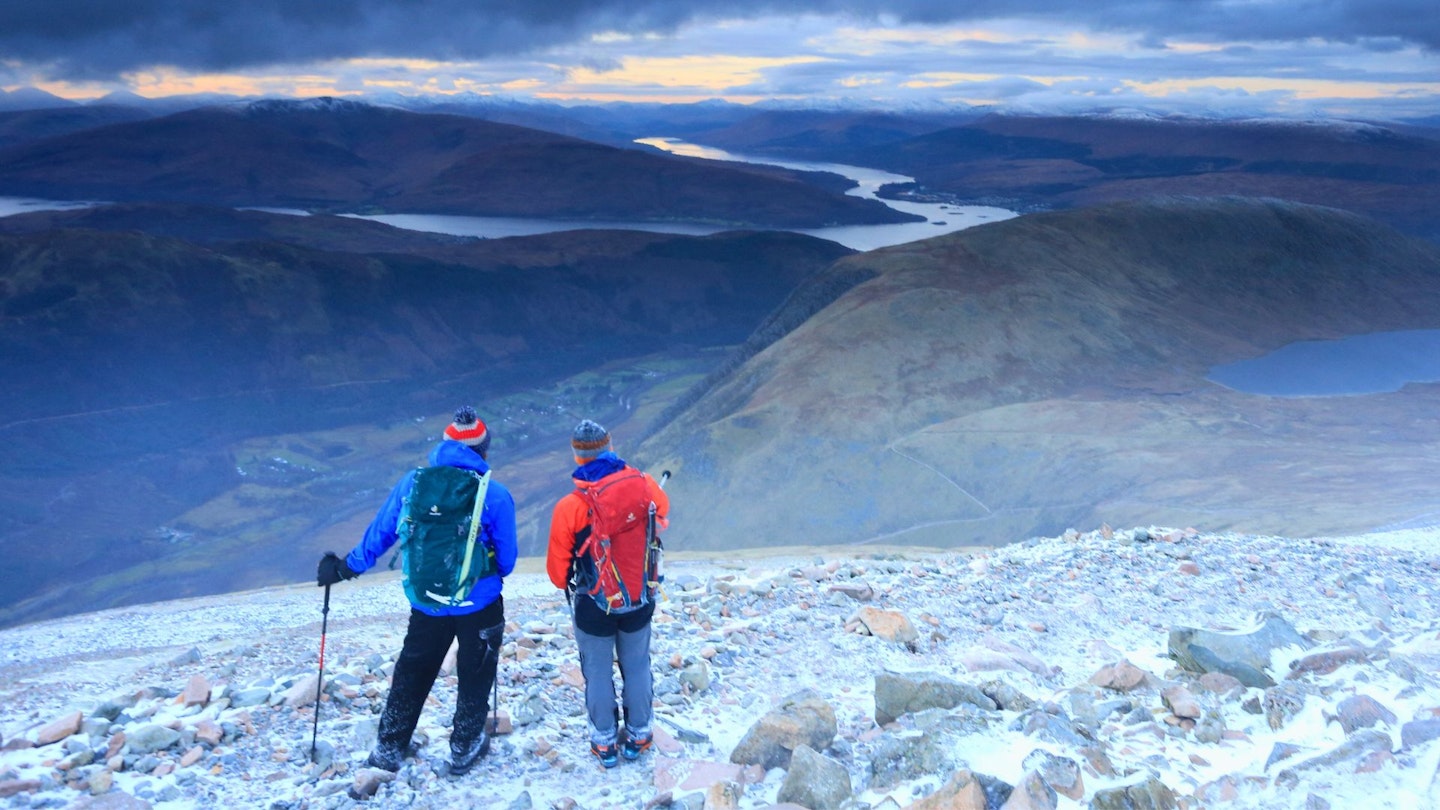
The simple answer to this question is yes. No matter what route you take, or whatever time of year you visit, Ben Nevis is a very challenging mountain to climb and a big physical undertaking.
Mountain Rescue callouts are frequent on Ben Nevis, with a record of 165 in 2024. This confirms the importance of good planning, suitable clothing and equipment, and gaining hillwalking experience before tackling some of the most remote terrain in the UK.
The Mountain Track is technically the easiest route, but the fierce weather conditions and navigational obstacles near the summit mean you must be an experienced walker with good map and compass skills to attempt it.
Other routes (see below) range from low-graded scrambles to technical rock climbs and winter mountaineering epics, so play your ascent carefully and choose a route that suits your level of experience and ability.
How long does it take to climb Ben Nevis?
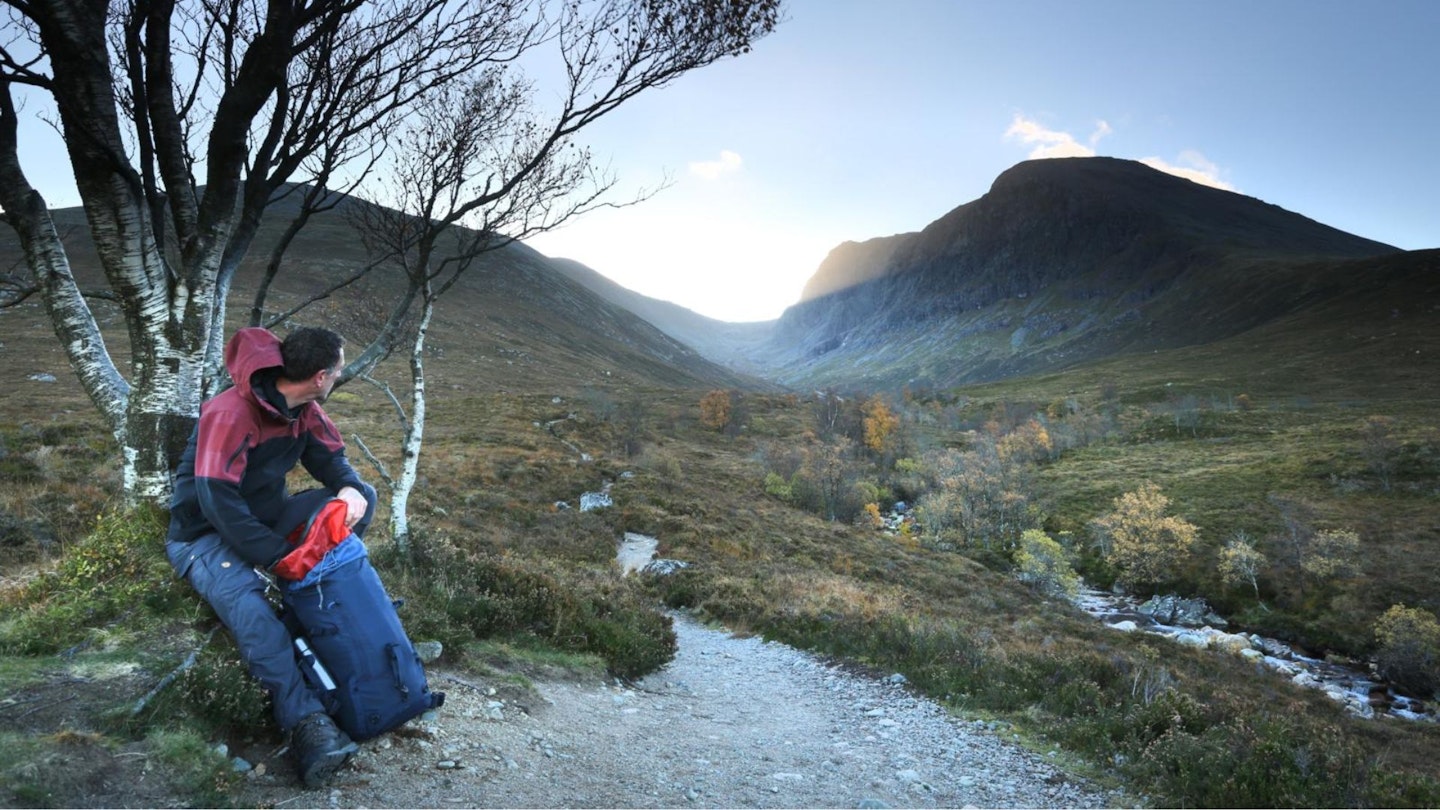
That depends on your chosen route and level of fitness. The Mountain Track is the busiest path on Ben Nevis and takes an average of seven to eight hours, with Three Peaks Challenge walkers often aiming to complete it in five hours or less.
Longer and more technical routes such as the CMD Arete or Ledge Route take longer. Check the individual route descriptions below for full details of each.
What’s the easiest route up Ben Nevis?
Like many mountains, there are multiple routes to the top of Ben Nevis. The mountain’s famous north face is popular with rock climbers from all over the world, but most of those routes are far too advanced for hillwalkers. The three most popular routes to the summit for hikers and scramblers are described below:
The Mountain Track

Starting in Glen Nevis and climbing a long chain of stone steps and pitched paths to the ‘Halfway Lochan’, the Mountain Track is by far the most straightforward route up The Ben.
From Lochan Meall an t-Suidhe you’ll cross the Red Burn before hitting the infamous zigzags – a series of seemingly neverending switchbacks on loose scree that finish on the summit plateau.
From there, only around 1km remains to the summit but beware – the path runs perilously close to the cliffs of the north face.
The CMD Arete
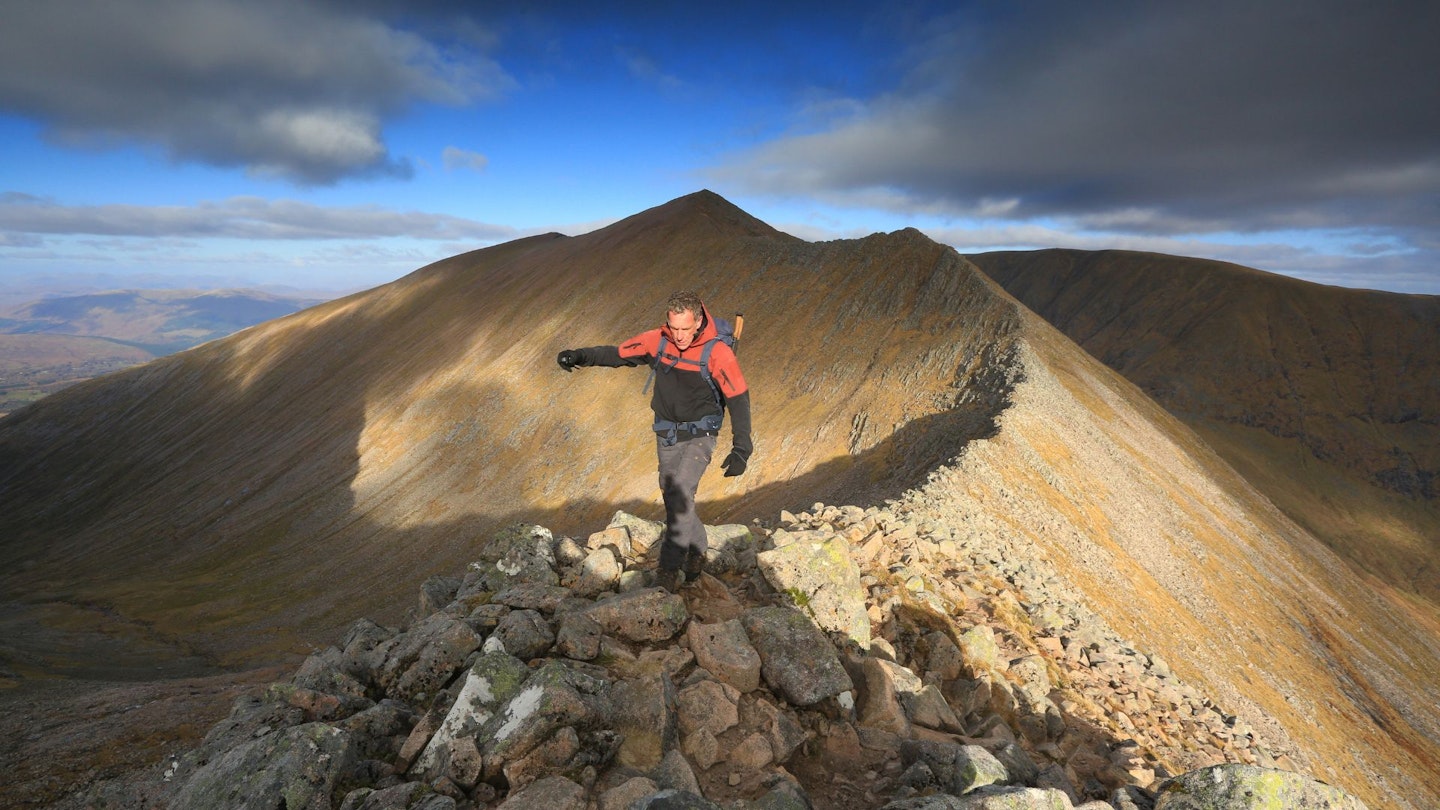
This epic ridge route starts from the North Face Car Park near Torlundy and first climbs the 1,220m peak of Carn Mor Dearg before turning its attention to The Ben.
The views into the north face are epic from the moment you get high, and they get even better as you drop down from Carn Mor Dearg to the start of the CMD Arete.
From here a long, sweeping, rocky traverse slingshots you almost directly to the summit. It’s classed as a Grade 1 scramble but for the most part is exciting, rocky and exposed walking.
The Ledge Route
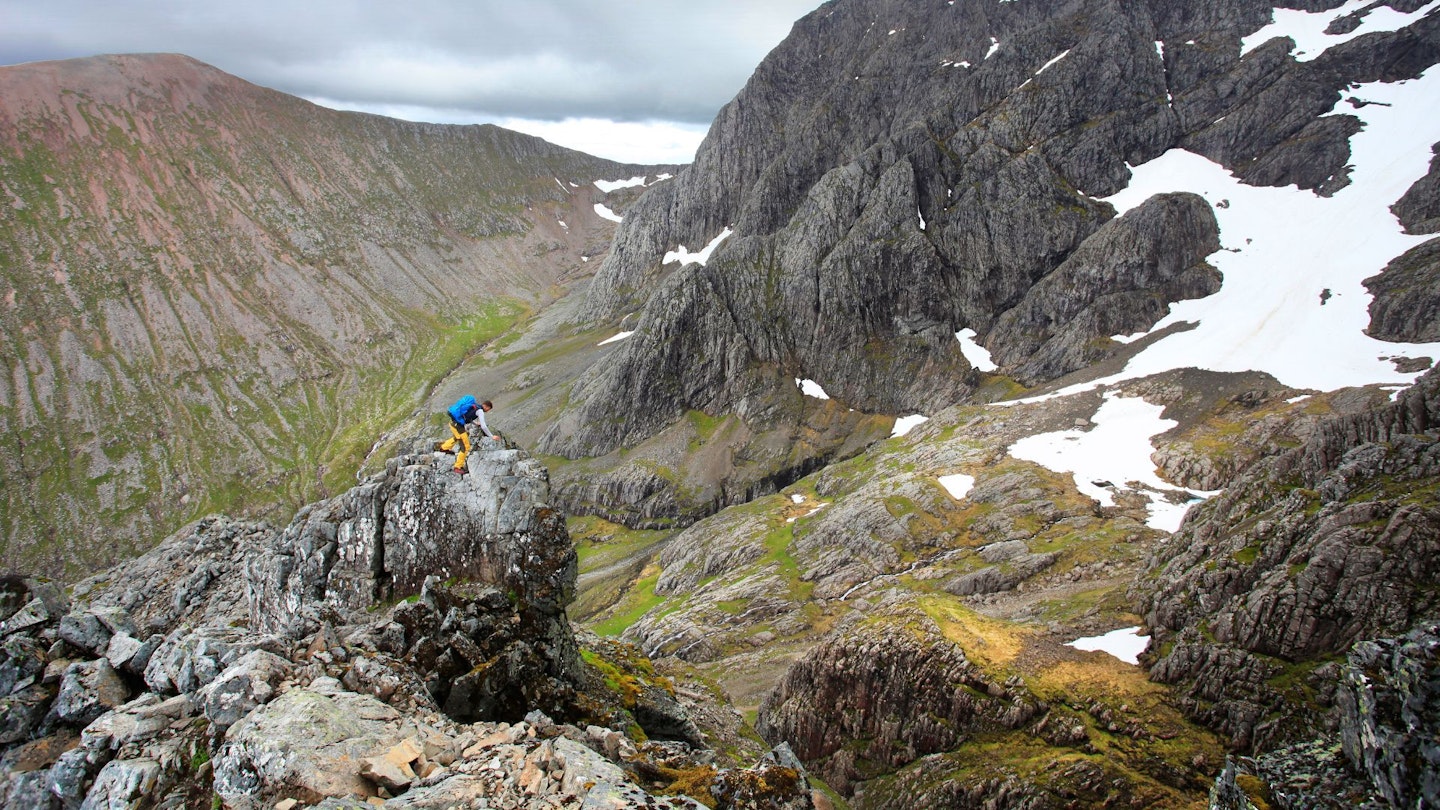
Not one for the faint-hearted, the Ledge Route is an exposed and nerve-jangling Grade 2 scramble that starts from the CIC Hut in Coire Leis before waving its way upwards through the steep gullies, shattered crags and exposed edges of the north face.
Don’t even think about attempting it unless you’re very assured on sheer, technical terrain. The route is also almost impossible outside of high summer unless you’re a competent winter mountaineer. The views and drama are something else though!
What’s the weather like?
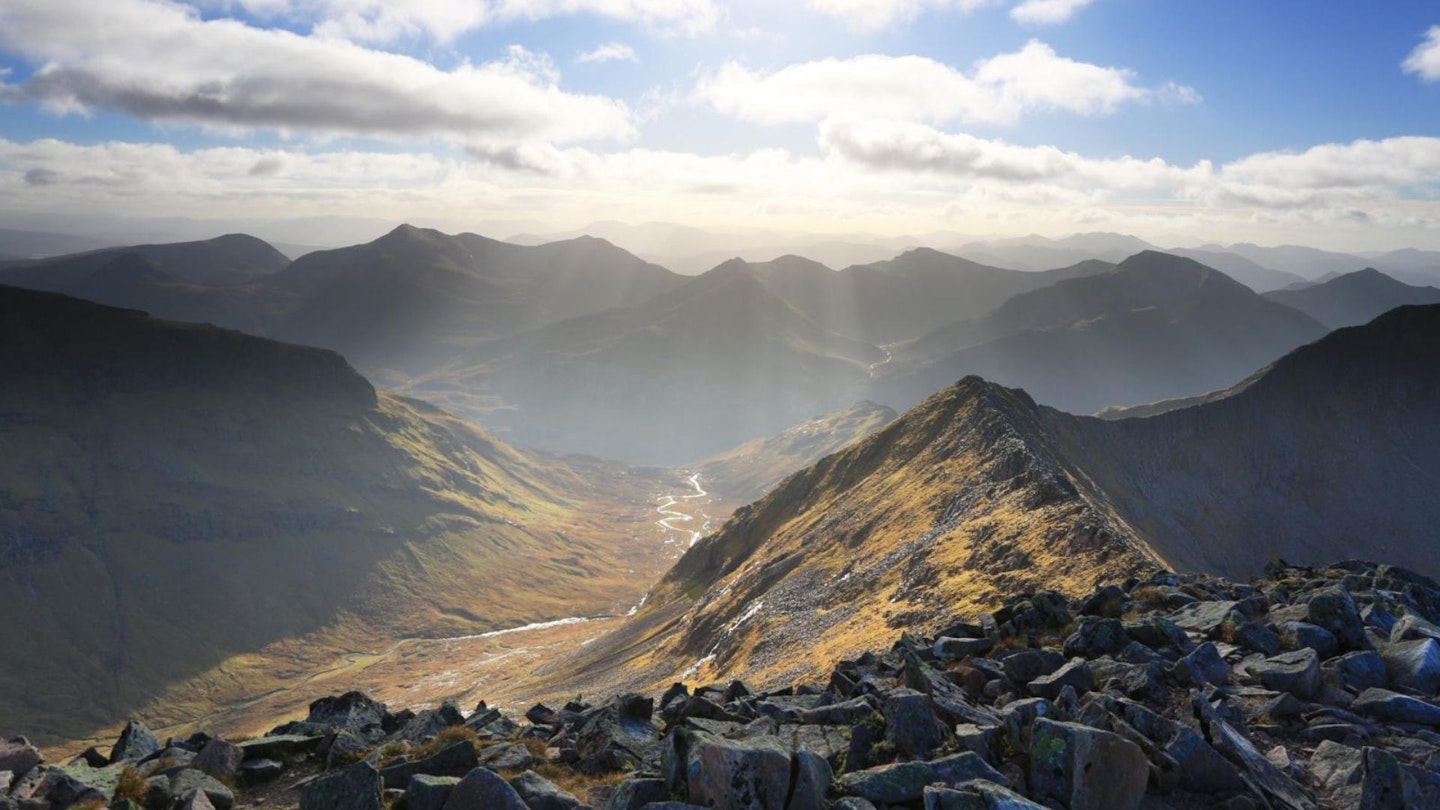
Unpredictable! Ben Nevis generates its own weather systems and the average annual temperature on the summit sits just below freezing. It isn’t uncommon for sun to be shining in Fort William below while snow is falling on the mountain’s summit.
You must be prepared for wind rain, low cloud, freezing temperatures and snow, even in summer. Or if you’re lucky, you may even get some sunshine.
The Mountain Weather Information Service is updated twice daily and the Met Office mountain forecast provides an hourly overview of the conditions you could face on the mountain.
Can I climb Ben Nevis in winter?
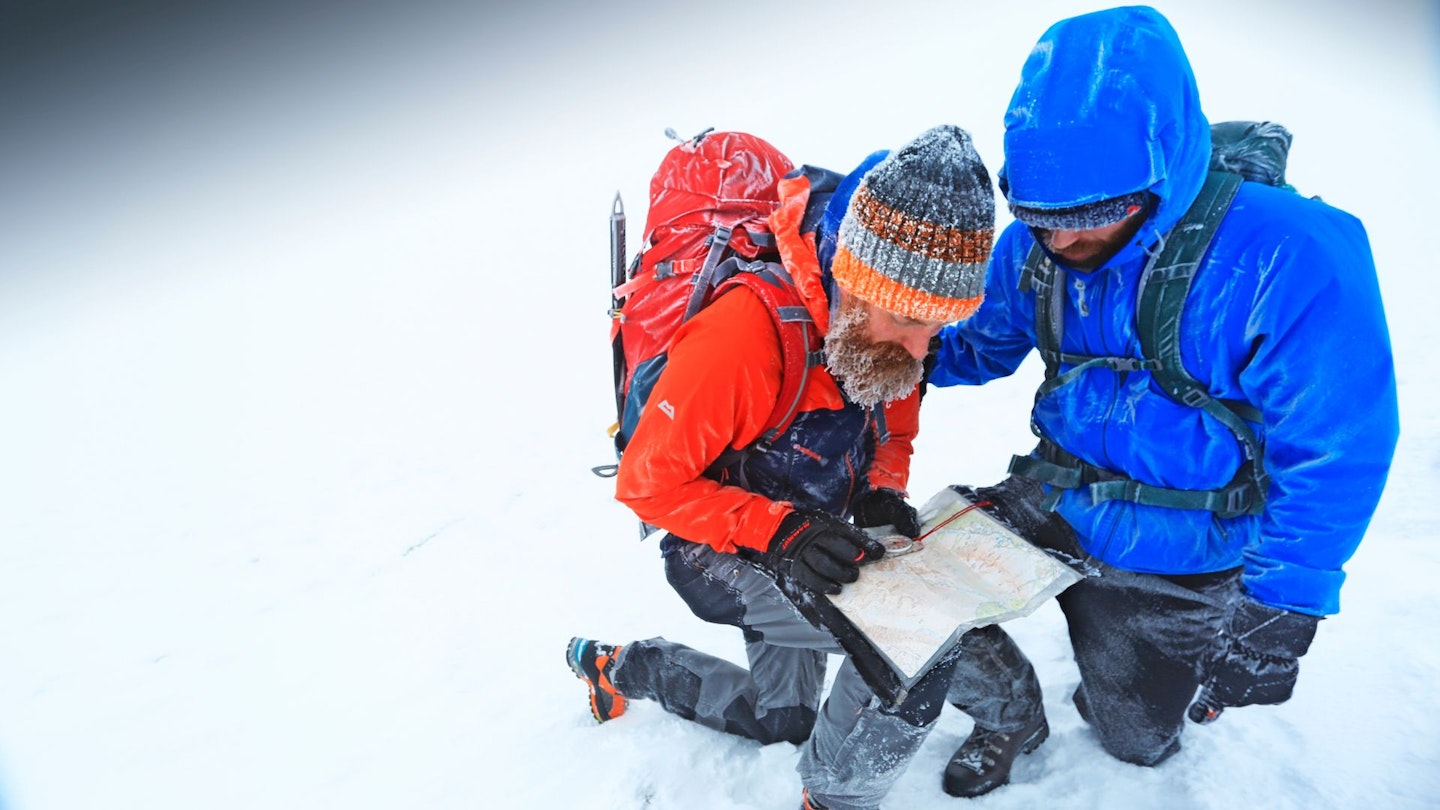
Our honest advice, unless you’re an experienced winter walker or mountaineer, would be to save Ben Nevis for summer. In the winter months, Scotland’s highest mountain is a different challenge altogether, with snow and ice taking a firm grip on its higher slopes.
Navigation becomes extremely complex as the summit plateau becomes a featureless world of white, and sub-zero temperatures make good quality mountain clothing and equipment absolutely essential.
Without competent ice and crampon skills, Ben Nevis is a very dangerous place to be at this time of year.
For more information, see our guide to climbing Ben Nevis in winter.
What gear do I need to climb Ben Nevis?
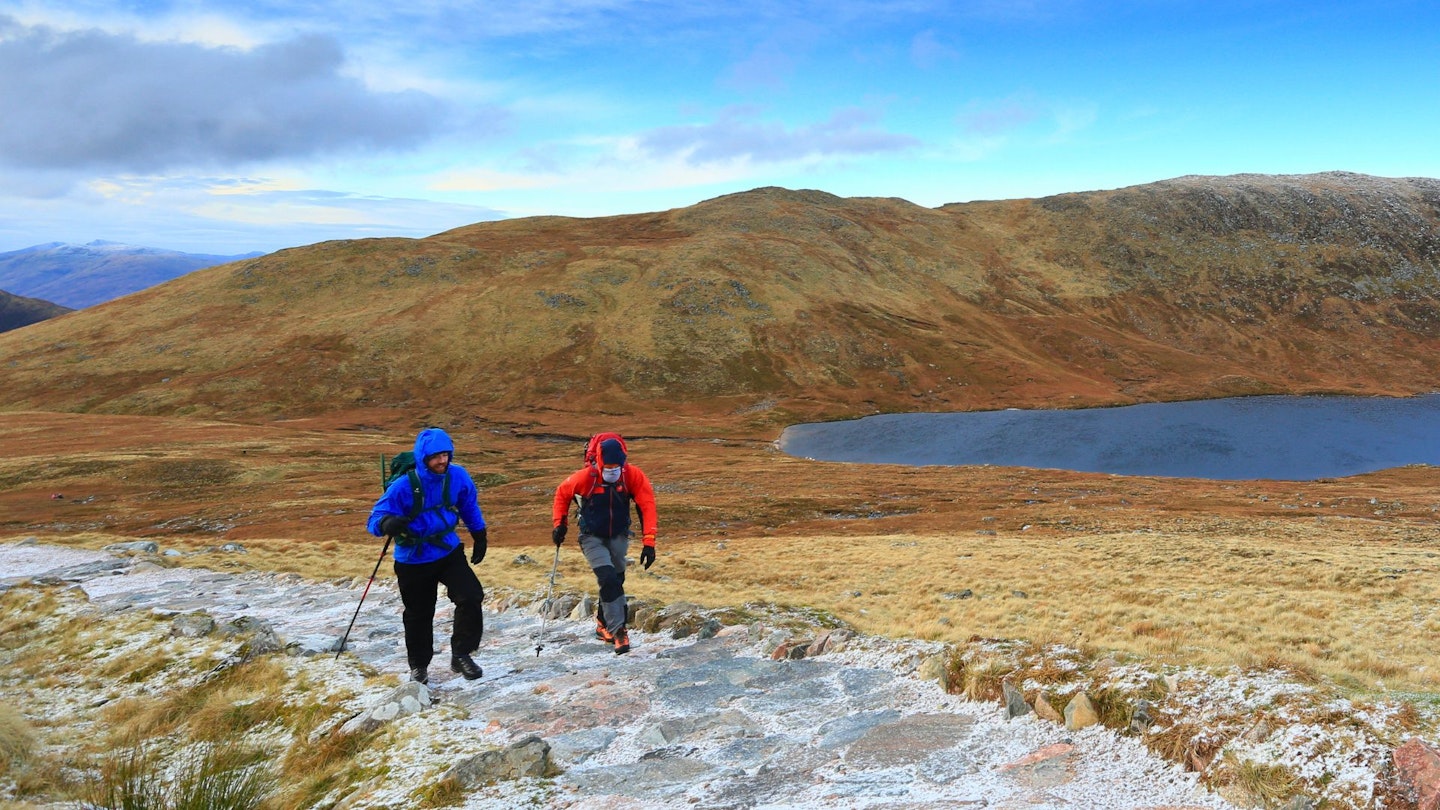
Whatever route you choose, climbing Ben Nevis is a big and challenging mountain day so you’ll need reliable gear and the skills to navigate if the weather turns on you.
Absolute essentials include comfortable and supportive footwear, waterproofs, insulating layers, hat, gloves, a backpack to carry food and drink, plus a printed map and compass.
The Mountain Track is likely to be busy in the main walking seasons, but you can’t rely on other walkers to be close by if you need to make decisions on navigation. If the cloud is low and visibility is poor, map and compass skills will be needed close to the summit to make sure you don’t stray close to the cliffs of the north face.
See our hiking gear reviews for all the latest product testing from our expert gear team.
Where’s the best place to park?

The Glen Nevis pay and display car park (postcode PH33 6PF) is ideal for anyone attempting the Mountain Track. There is space for around 100 cars, plus toilets, a shop and picnic areas.
If attempting the CMD Arete or Ledge Route, the North Face Car Park is your best bet (postcode PH33 6SW). Spaces are limited and there are no toilets or shop, and it recently introduced a pay and display parking charge.
Where can I buy food and drink?
Fort William has plenty of options for food including supermarkets (Morrisons and Aldi are both nearby), takeaways, pubs and restaurants. Make sure you stock up before you start walking, because once you begin your ascent you won’t see another shop until you’ve safely descended the mountain.
What’s the best local pub?
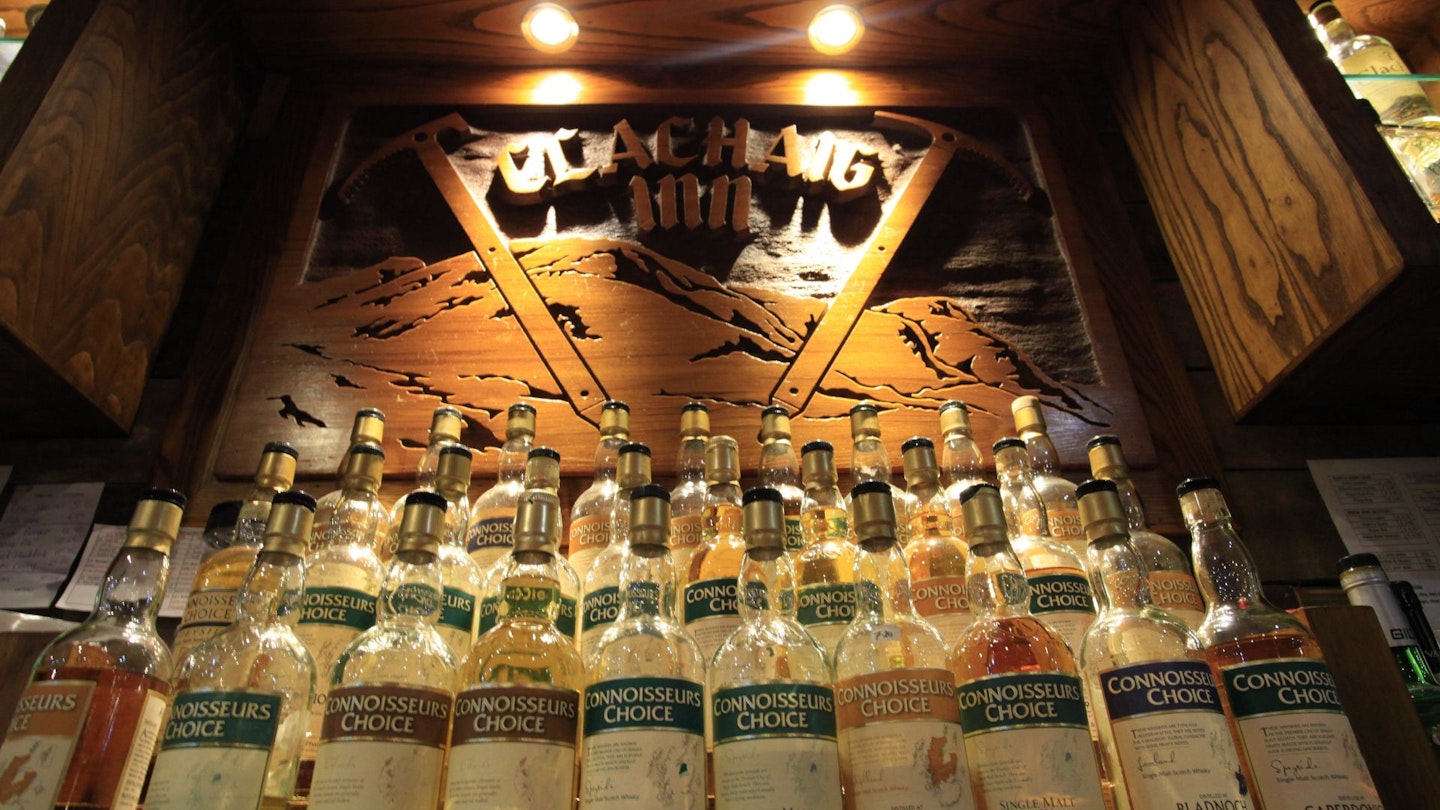
For atmosphere, real ale and proper pub grub, we’ve always liked the Grog & Gruel on Fort William high street. It isn’t the biggest pub in town and can get busy, so get there early and settle in for the night! If you don’t mind travelling a bit further for your post-walk pint, the Clachaig Inn in Glen Coe is the stuff of legend.
Where’s the best place to stay?
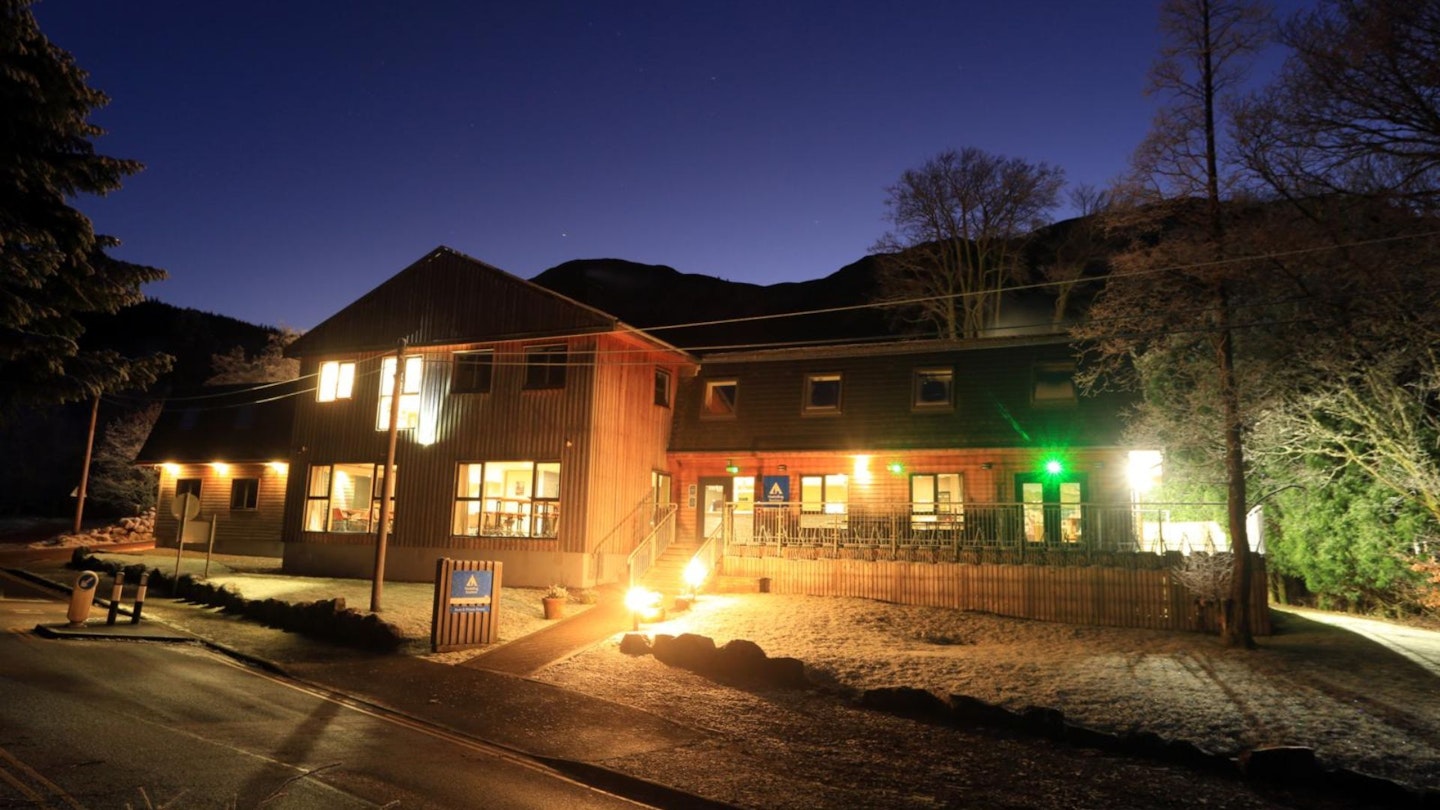
Fort William and the surrounding areas have a huge variety of accommodation options, ranging from campsites, B&Bs and hotels to a Travelodge on the high street. Check Booking.com for good deals.
Our favourite picks are the SYHA’s Glen Nevis Youth Hostel and the fabulous Glen Nevis Caravan and Camping Park, both located right at the base of the Mountain Track.
Will I get phone signal?
Phone signal can be quite patchy and doesn’t work all over the mountain. If you’re using a GPS app that requires signal, it CANNOT be relied upon for for navigation. Make sure you download all digital maps before your hike and always carry a printed map and compass, too.
Are there bins on Ben Nevis?
Glen Nevis Visitor Centre provides bins but beyond that, there’s nothing on the mountain. So carry all your rubbish down with you and never leave it strewn across one of Britain’s most cherished landscapes.
Are there toilets on Ben Nevis?
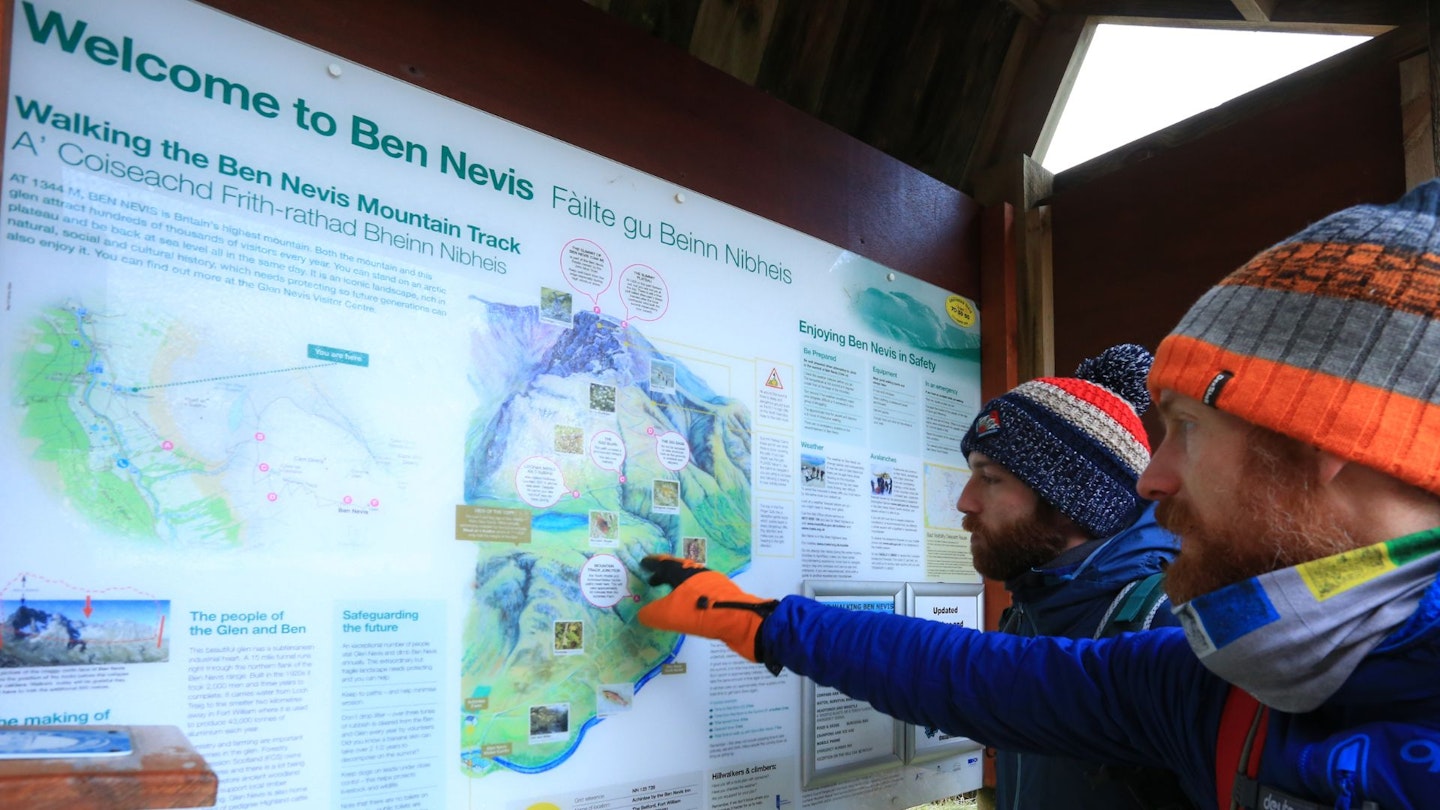
Absolutely not! The nearest loos are at Glen Nevis Visitor Centre, so make sure you use them before you set off and don’t leave anything unpleasant behind if you do get caught short.
Can I take my dog?
You can, but preferably on a lead and always under close control. Don’t let your dog impede other walkers and be aware that sheep often graze up to around 700m.
The terrain is a mix of constructed stone paths, scree, and bare rock, which can be harsh on a dog’s pads. So test them on similar routes first.
How do I contact Mountain Rescue in an emergency?

First up, are you sure you need rescuing? Being tired or running out of Skittles aren’t good enough reasons to mobilise a busy team of overworked volunteers.
If it’s a genuine emergency, and you believe you or one of your party are in danger, dial 999 or 112 and ask for Police, then Mountain Rescue. Know your location and emergency details before calling.
Ben Nevis – our top 5 insider tips
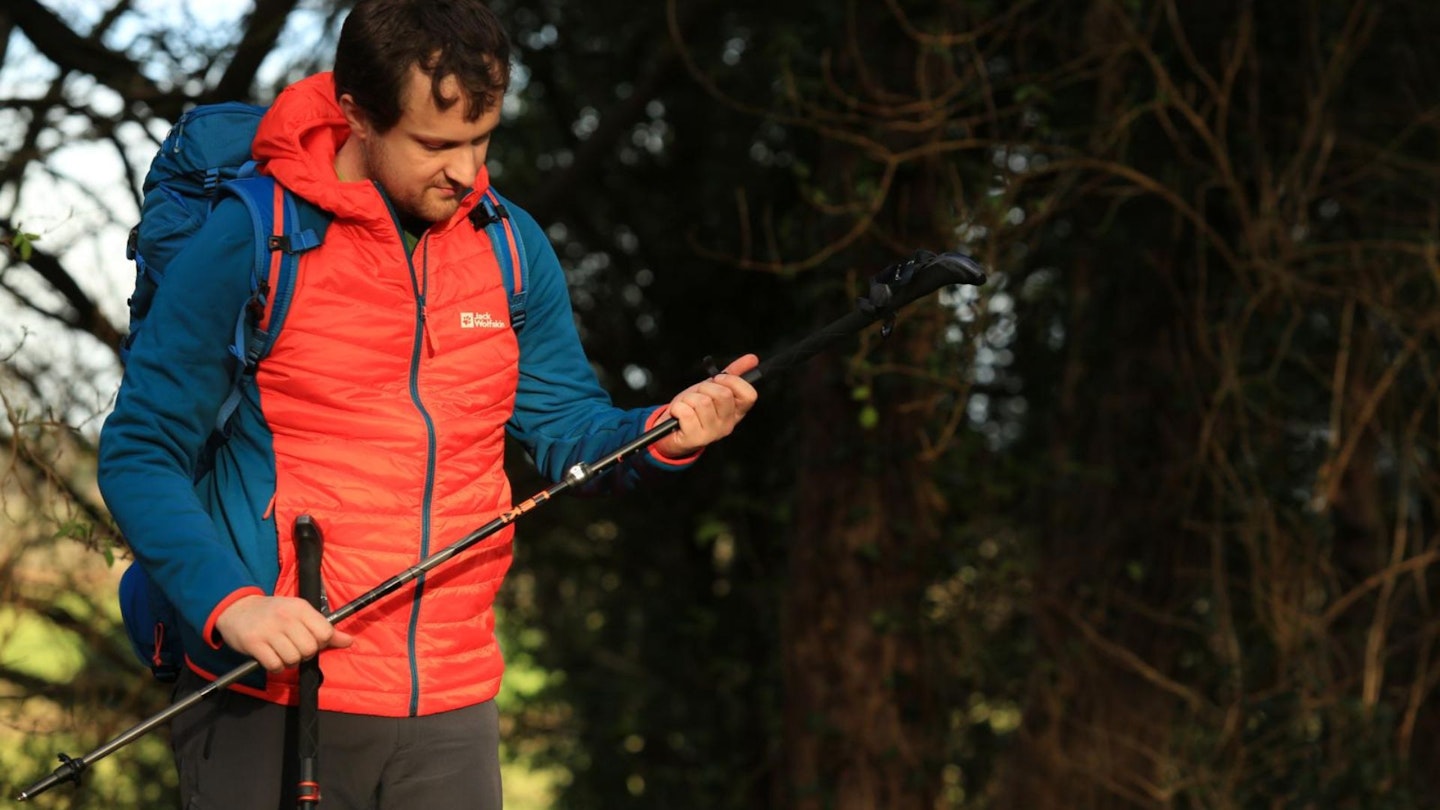
1. Carry walking poles
Whatever route of ascent you take, you’ll be faced with a long and steep descent that will take its toll on your knees. Walking poles will help ease the strain.
2. Avoid drinking from streams
You can if you want, of course, but it isn’t safety tested and on a busy day there can be well over 1,000 people on the mountain. And no toilets!
3. Buy midge spray
Midges are a common enemy in Highland summer. Glen Nevis in particular is crawling with the little beasties when the weather suits them.
4. Wear sunscreen
On the admittedly rare days of blazing sunshine on Ben Nevis, particularly if there’s snow on the ground, it’s all too easy to get sunburnt.
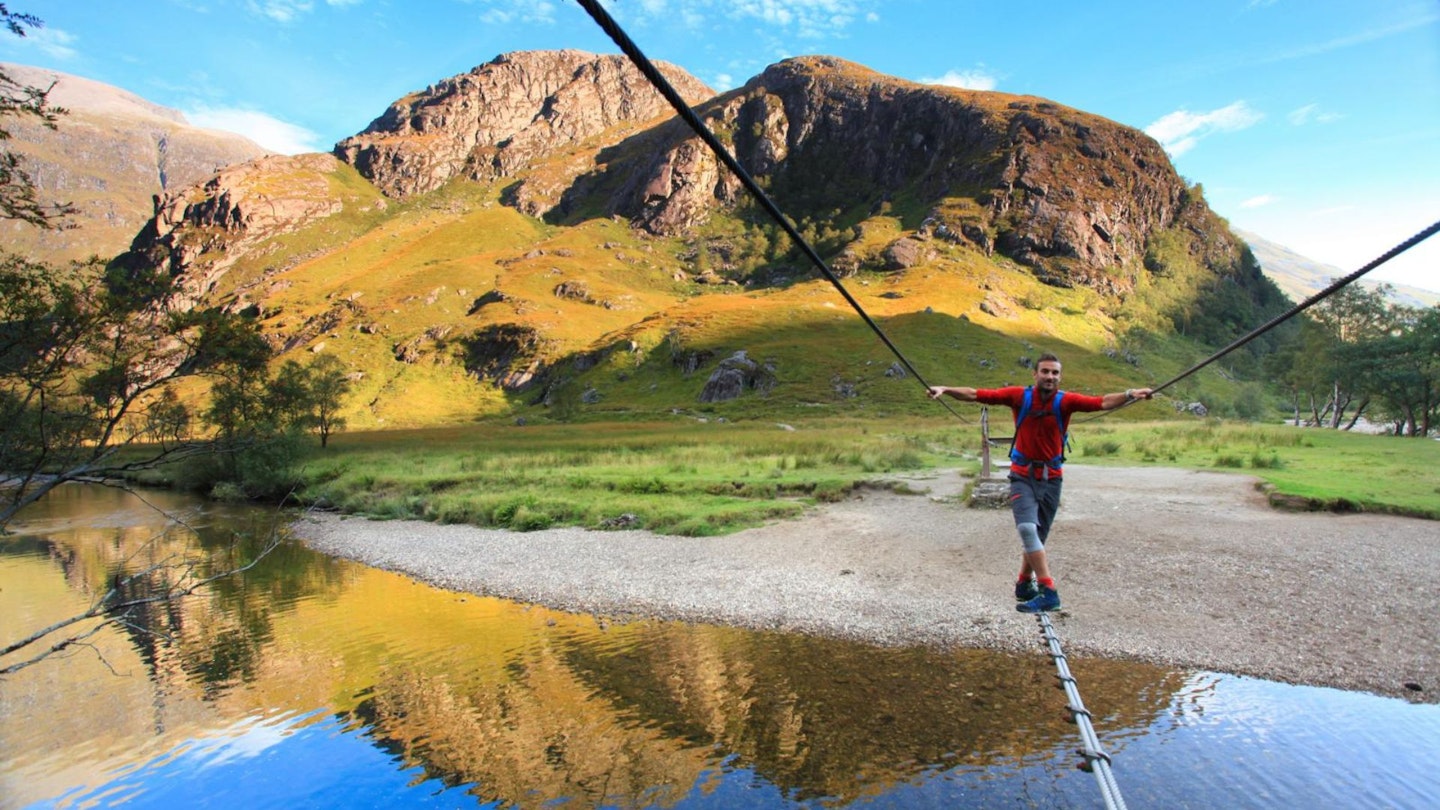
5. Make a weekend of it
If you decide to stay in the area for a few days (and you really should), the chain of four Munros known as the Ring of Steall that stand across Glen Nevis to the south make a great additional day of walking.
And if you fancy an easier day, take the short rocky path that leads from the head of Glen Nevis to An Steall waterfall. The scenery is magical.
Ben Nevis – 11 facts and stats to impress your walking buddies
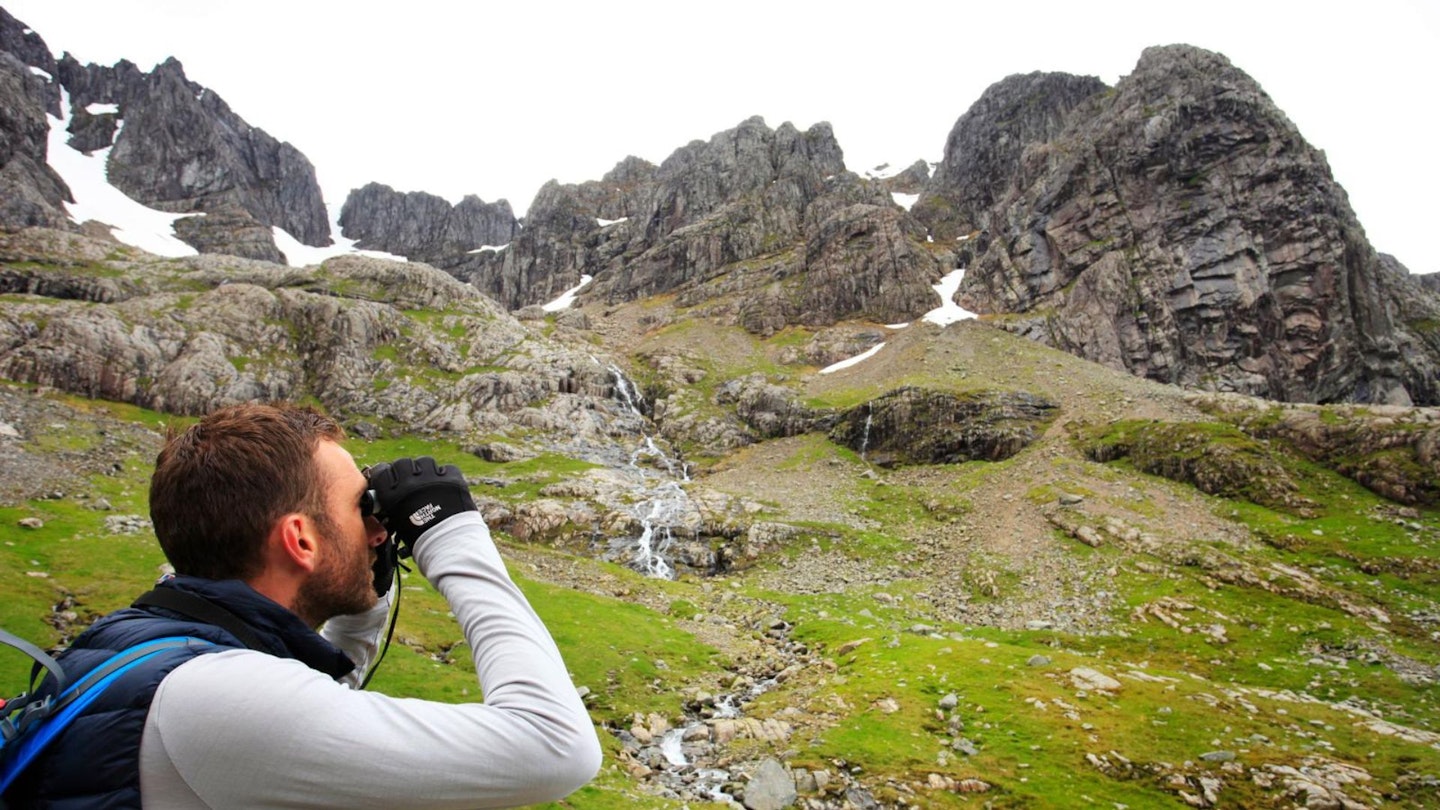
-
The average annual temperature at the summit of Ben Nevis is -1°C.
-
In a typical year, the summit is battered by 261 gales and covered by cloud nine out of 10 days
-
The summit of Ben Nevis receives more than double the annual rainfall of nearby Fort William.
-
Approximately 75% of all ascents of Ben Nevis are made via the Mountain Track (also known as the Pony Track or Tourist Track).
-
The name Ben Nevis comes from the Gaelic beinn nibheis, which either means ‘malicious mountain’ or ‘mountain of heaven’, depending on who you ask. Either is apt.
-
The first recorded ascent of Ben Nevis was 17 August 1771 by botanist James Robertson, who was in the region to collect specimens.
-
On a good day, views from the summit can extend over 190km (120 miles) and include parts of Northern Ireland.
-
Unusual objects that have made it to the summit of Ben Nevis include a Model T Ford (check out this footage from 1911), a wheelbarrow, a barrel of beer, a piano, a temporary Travelodge bedroom, and a pole dancer complete with a portable pole.
-
In 1883, an observatory was opened on the summit of Ben Nevis. It was staffed by three people and provided valuable meteorological data on an hourly basis for two decades.
-
Two years after the observatory opened local hotelier Robert Whyte built the Observatory Hotel, which allowed summiteers to spend a night on top of Ben Nevis for 10 shillings a night – including dinner, bed and breakfast. The summit hotel ran for 31 years before closing down in 1916.
-
The summit shelter since built on top of the observatory ruins is the highest manmade object in the UK.
